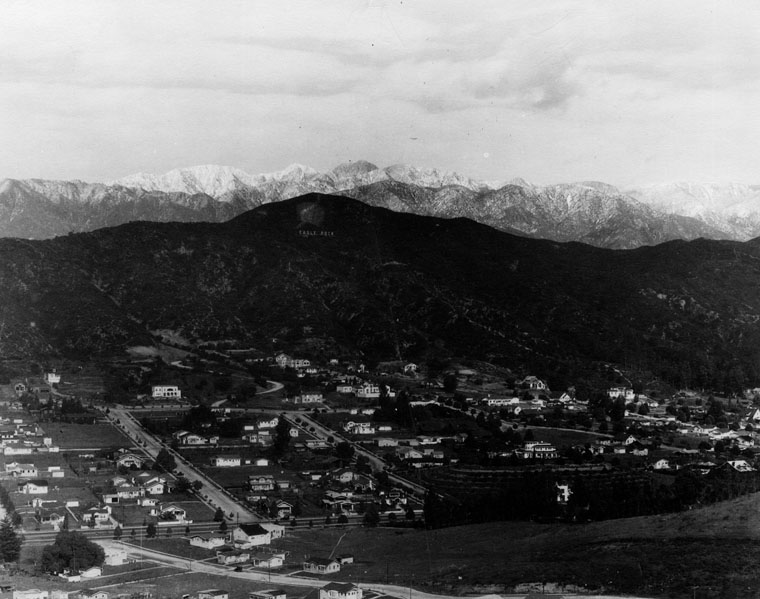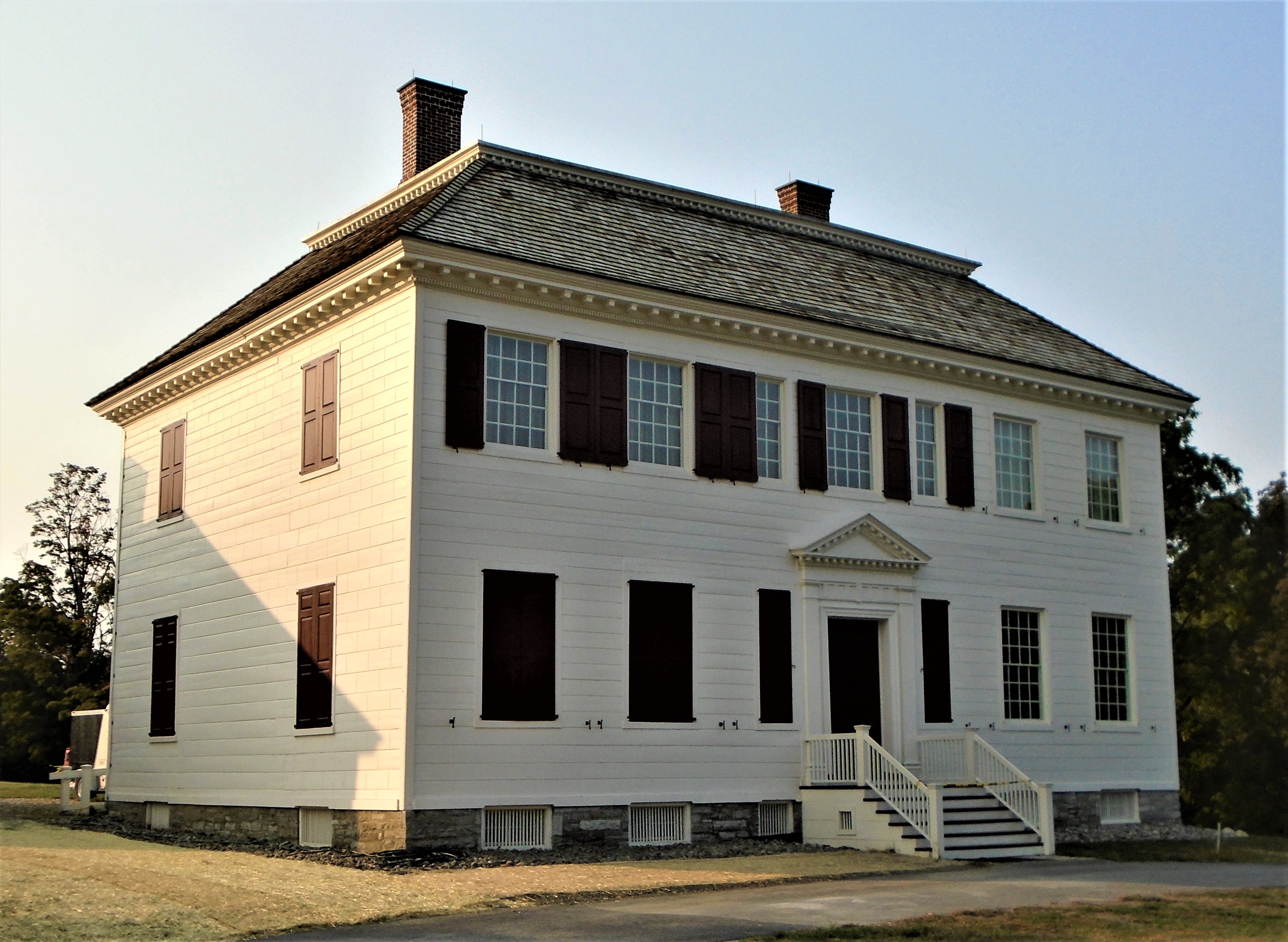|
Eagle Rock, Los Angeles, California
Eagle Rock is a neighborhood of Northeast Los Angeles, abutting the San Rafael Hills in Los Angeles County, California. Eagle Rock is named after Eagle Rock, a large boulder whose shadow resembles an eagle.http://www.eaglerockcouncil.org/index.php?option=com_content&view=article&id=60&Itemid=72 Eagle Rock Neighborhood Council, History of. Retrieved June 24, 2010 Eagle Rock was once part of the Rancho San Rafael under Spanish and Mexican governorship. In 1911, Eagle Rock was incorporated as a city, and in 1923 it combined with the City of Los Angeles. The neighborhood is the home of Occidental College and is known for being an enclave of counterculture. As with other neighborhoods in Northeast Los Angeles, Eagle Rock experienced significant gentrification in the 21st century. History Before the arrival of European settlers, the secluded valley below the San Rafael Hills that is roughly congruent to Eagle Rock's present boundaries was inhabited by the Tongva people, whose staple ... [...More Info...] [...Related Items...] OR: [Wikipedia] [Google] [Baidu] |
Neighborhoods In Los Angeles
This is a list of notable districts and neighborhoods within the city of Los Angeles, California, present and past. It includes residential and commercial areas and business-improvement districts, but does not include sales subdivisions or sales tracts. The guiding precept is Wikipedia:Notability (geographic features)#Geographic regions, areas and places. AE * Adams-Normandie * Alsace * Angelino Heights''The Thomas Guide: Los Angeles County'', Rand McNally (2004), pages N and O * Angeles Mesa * Angelus Vista * ArletaNeighborhoods , Mapping L.A., ''Los Angeles Times'' * Arlington Heights * [...More Info...] [...Related Items...] OR: [Wikipedia] [Google] [Baidu] |
Rancho San Rafael
Rancho San Rafael was a Spanish land grant in the San Rafael Hills, bordering the Los Angeles River and the Arroyo Seco in present-day Los Angeles County, southern California, given in 1784 to Jose Maria Verdugo. Geography The rancho includes the present day cities of Glendale, La Cañada Flintridge, Montrose, Verdugo City; and the city of Los Angeles neighborhoods of Atwater Village, Cypress Park, Eagle Rock, Garvanza, Glassell Park, Highland Park, and Mount Washington. "Eastside Lifestyle," Atwater Village History, ''Eastside LA Lifestyle'' The rancho's boundaries were primarily defined by the on the west, the [...More Info...] [...Related Items...] OR: [Wikipedia] [Google] [Baidu] |
Glendale, California
Glendale is a city in the San Fernando Valley and Verdugo Mountains regions of Los Angeles County, California California is a state in the Western United States, located along the Pacific Coast. With nearly 39.2million residents across a total area of approximately , it is the most populous U.S. state and the 3rd largest by area. It is also the ..., United States. At the 2020 U.S. Census the population was 196,543, up from 191,719 at the 2010 census, making it the fourth-largest city in Los Angeles County and the 24th-largest city in California. It is located about north of downtown Los Angeles. Glendale lies in the Verdugo Mountains, and is a suburb in the Los Angeles metropolitan area. The city is bordered to the northwest by the Sun Valley, Los Angeles, Sun Valley and Tujunga, Los Angeles, California, Tujunga neighborhoods of Los Angeles; to the northeast by La Cañada Flintridge, California, La Cañada Flintridge and the unincorporated area of La Crescent ... [...More Info...] [...Related Items...] OR: [Wikipedia] [Google] [Baidu] |
Pasadena, California
Pasadena ( ) is a city in Los Angeles County, California, northeast of downtown Los Angeles. It is the most populous city and the primary cultural center of the San Gabriel Valley. Old Pasadena is the city's original commercial district. Its population was 138,699 at the 2020 census, making it the 44th largest city in California and the ninth-largest city in Los Angeles County. Pasadena was incorporated on June 19, 1886, becoming one of the first cities to be incorporated in what is now Los Angeles County, following the city of Los Angeles (April 4, 1850). Pasadena is known for hosting the annual Rose Bowl football game and Tournament of Roses Parade. It is also home to many scientific, educational, and cultural institutions, including Caltech, Pasadena City College, Kaiser Permanente Bernard J. Tyson School of Medicine, Fuller Theological Seminary, ArtCenter College of Design, the Pasadena Playhouse, the Ambassador Auditorium, the Norton Simon Museum, and the USC ... [...More Info...] [...Related Items...] OR: [Wikipedia] [Google] [Baidu] |
Suburbanization
Suburbanization is a population shift from central urban areas into suburbs, resulting in the formation of (sub)urban sprawl. As a consequence of the movement of households and businesses out of the city centers, low-density, peripheral urban areas grow. Sub-urbanization is inversely related to urbanization, which denotes a population shift from rural areas into urban centers. Many residents of metropolitan regions work within the central urban area, but live outside of it, in satellite communities called suburbs, and commute to work by car or mass transit. Others have the opportunity to work from home, due to technological advances. Suburbanization often occurs in more economically developed countries. The United States is believed to be the first country in which the majority of the population lived in suburbs rather than cities or rural areas. Proponents of containing the urban sprawl argue that the sprawl leads to urban decay and a concentration of lower-income resid ... [...More Info...] [...Related Items...] OR: [Wikipedia] [Google] [Baidu] |
Colorado Boulevard
Colorado Boulevard (or Colorado Street in Glendale and Arcadia) is a major east–west street in Southern California. It runs from Griffith Park in Los Angeles east through Glendale, the Eagle Rock section of Los Angeles, Pasadena, and Arcadia, ending in Monrovia. The full route was once various state highways but is now locally maintained in favor of the parallel Ventura Freeway ( SR 134) and Foothill Freeway ( I-210). Route description West end The west end of Colorado Boulevard is composed of two segments: a disconnected surface street segment of Colorado Boulevard, and the Colorado Street Freeway Extension. Colorado Boulevard begins at a cul-de-sac near the Los Angeles River in Los Angeles and continues east. The road passes on/off-ramps to the eastbound Colorado Street Freeway Extension, and Edenhurst Avenue, which provides access to the westbound freeway. The segment terminates at West San Fernando Road near the Los Angeles- Glendale city limits, and picks up a ... [...More Info...] [...Related Items...] OR: [Wikipedia] [Google] [Baidu] |
Tongva People
The Tongva ( ) are an Indigenous people of California from the Los Angeles Basin and the Southern Channel Islands, an area covering approximately . Some descendants of the people prefer Kizh as an endonym that, they argue, is more historically accurate. In the precolonial era, the people lived in as many as 100 villages and primarily identified by their village rather than by a pan-tribal name. During colonization, the Spanish referred to these people as Gabrieleño and Fernandeño, names derived from the Spanish missions built on their land: Mission San Gabriel Arcángel and Mission San Fernando Rey de España. ''Tongva'' is the most widely circulated endonym among the people, used by Narcisa Higuera in 1905 to refer to inhabitants in the vicinity of Mission San Gabriel. Along with the neighboring Chumash, the Tongva were the most influential people at the time of European encounter. They had developed an extensive trade network through '' te'aats'' (plank-built boat ... [...More Info...] [...Related Items...] OR: [Wikipedia] [Google] [Baidu] |
Eagle Rock City Hall (cropped)
Eagle is the common name for many large birds of prey of the family Accipitridae. Eagles belong to several groups of genera, some of which are closely related. Most of the 68 species of eagle are from Eurasia and Africa. Outside this area, just 14 species can be found—2 in North America, 9 in Central and South America, and 3 in Australia. Eagles are not a natural group but denote essentially any kind of bird of prey large enough to hunt sizeable (about 50 cm long or more overall) vertebrates. Description Eagles are large, powerfully-built birds of prey, with heavy heads and beaks. Even the smallest eagles, such as the booted eagle (''Aquila pennata''), which is comparable in size to a common buzzard (''Buteo buteo'') or red-tailed hawk (''B. jamaicensis''), have relatively longer and more evenly broad wings, and more direct, faster flight – despite the reduced size of aerodynamic feathers. Most eagles are larger than any other raptors apart from some vultures. The smallest ... [...More Info...] [...Related Items...] OR: [Wikipedia] [Google] [Baidu] |
Johnson Hall
Johnson Hall State Historic Site was the home of Sir William Johnson (1715–1774) an Irish pioneer who became the influential British Superintendent of Indian Affairs in the Province of New York, known for his strong relationship especially with the Mohawk and other Iroquois League nations. Johnson Hall is located at Hall Avenue, West State Street and Johnson Avenue, in Johnstown, New York. History The house was built seven miles from the Mohawk River, close to Hall Creek. Hall Creek provided water sufficient to power a sawmill and later a grist mill. Built of wood, the house frame was covered with wood planks intended to simulate stone. Johnson engaged leading colonial architect Peter Harrison (1716-1775) to design the house; he hired the carpenter, Samuel Fuller, to build it. At least some of the ideas for the house came from the ''Builders' Companion'' magazine. Johnson also had two stone block houses built as defenses against attack on the frontier, as the British had ju ... [...More Info...] [...Related Items...] OR: [Wikipedia] [Google] [Baidu] |
Gentrification
Gentrification is the process of changing the character of a neighborhood through the influx of more affluent residents and businesses. It is a common and controversial topic in urban politics and planning. Gentrification often increases the economic value of a neighborhood, but the resulting demographic displacement may itself become a major social issue. Gentrification often sees a shift in a neighborhood's racial or ethnic composition and average household income as housing and businesses become more expensive and resources that had not been previously accessible are extended and improved. The gentrification process is typically the result of increasing attraction to an area by people with higher incomes spilling over from neighboring cities, towns, or neighborhoods. Further steps are increased investments in a community and the related infrastructure by real estate development businesses, local government, or community activists and resulting economic development, in ... [...More Info...] [...Related Items...] OR: [Wikipedia] [Google] [Baidu] |
Counterculture
A counterculture is a culture whose values and norms of behavior differ substantially from those of mainstream society, sometimes diametrically opposed to mainstream cultural mores.Eric Donald Hirsch. ''The Dictionary of Cultural Literacy''. Houghton Mifflin. . (1993) p. 419. "Members of a cultural protest that began in the U.S. In the 1960s and Europe before fading in the 1970s... fundamentally a cultural rather than a political protest." A countercultural movement expresses the ethos and aspirations of a specific population during a well-defined era. When oppositional forces reach critical mass, countercultures can trigger dramatic cultural changes. Prominent examples of countercultures in the Western world include the Levellers (1645–1650), Bohemianism (1850–1910), the more fragmentary counterculture of the Beat Generation (1944–1964), followed by the globalized counterculture of the 1960s (1964–1974). Definition and characteristics John Milton Yinger originate ... [...More Info...] [...Related Items...] OR: [Wikipedia] [Google] [Baidu] |









